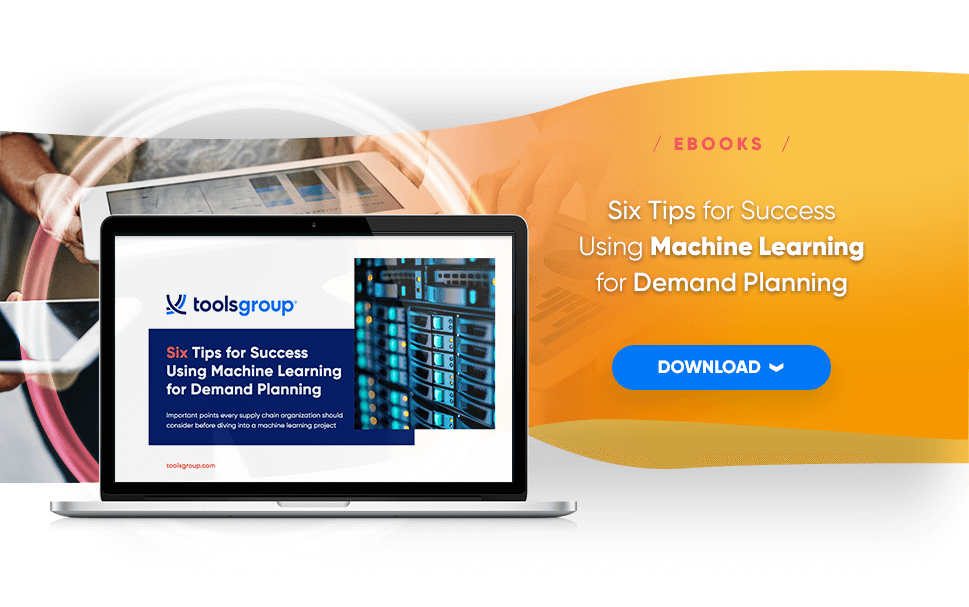How to Optimize Demand Forecasting: Probabilistic Solutions
If you were still using a computer or a telephone from the 1960s today, you’d get some strange looks, to say the least.
But many supply chain practitioners don’t realize that the most common approach to supply chain planning–using a demand-driven forecast as the primary input to future planning–is just as outdated.
Demand Forecasting Challenges
As businesses grapple with shifting consumer behaviors, market disruptions, and global uncertainties, the traditional demand forecasting methods are proving increasingly unreliable.
Companies that rely solely on deterministic models are struggling to keep up with demand fluctuations. The rising complexity of supply chains and the unpredictability of global events have made it clear that forecasting accuracy alone is no longer enough.
A recent study by McKinsey emphasizes that incorporating variability and uncertainty into forecasting models is crucial for navigating a rapidly evolving business landscape.
Forecast Accuracy vs. Uncertainty
Uncertainty-driven demand forecasting assumes that accuracy is an ongoing challenge. The key is to measure how well your supply chain can absorb uncertainty, rather than striving for perfect forecasts.
Here’s how to approach this shift from forecast-driven to uncertainty-driven planning:
- Acknowledge that your forecast will be wrong. If your forecast is wrong, then any decisions based on that forecast will also be wrong.
- Identify and prioritize sources of uncertainty and variability in your supply chain and use this data to improve your planning and decision-making.
- Adopt probabilistic planning instead of deterministic planning. By assessing ranges of possible outcomes, you can test how well your demand forecasting can handle uncertainty and volatility.
- Develop KPIs around resilience to uncertainty, such as time to survive, recovery time, and the probability of execution in various scenarios.
- Leverage a digital supply chain twin to model different forecasting outcomes and test responses to unexpected changes.
Stop interpreting demand-driven as forecast-driven by changing the focus of your planning onto uncertainty rather than exclusively on the accuracy of your plans,”
says Gartner analyst Tim Payne.
The Growing Focus on Optimization in Demand Forecasting
In recent years, the focus on forecast accuracy is gradually being replaced by a stronger emphasis on optimization, with a shift toward probabilistic and AI-driven approaches. Companies are increasingly recognizing that relying solely on accurate forecasts is no longer feasible in today’s unpredictable world.
At ToolsGroup, we’ve seen firsthand how probabilistic demand forecasting has been a key differentiator for businesses. By anticipating multiple scenarios, companies can become more resilient during crises, respond to unexpected demand shifts, and deliver better customer experiences, all while achieving optimal returns for shareholders.
Probabilistic Forecasting: The Key to Resilient Demand Planning
Probabilistic forecasting, where different potential outcomes are calculated, allows businesses to build flexible and resilient plans. By preparing for the unexpected, companies can align their supply chain goals with the reality of constant change, increasing their chances of success.
Watch video: What Is Probabilistic Forecasting?
The global disruptions of recent years, including the pandemic, have highlighted the limitations of traditional demand-driven forecasting methods. As the world continues to evolve, knowing how to leverage uncertainty in demand forecasting is more important than ever.
After all, it’s not just your forecast that’s wrong. Everyone’s forecast is wrong. The key to success in demand forecasting today is accepting uncertainty, building resilience, and using advanced forecasting methods that adapt to change.







